 W
WThe East India Company Military Seminary was a British military academy at Addiscombe, Surrey, in what is now the London Borough of Croydon. It opened in 1809 and closed in 1861. Its purpose was to train young officers to serve in the East India Company’s private army in India.
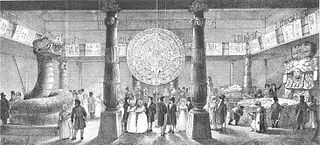 W
WAncient Mexico was an exhibition by William Bullock of casts of Aztec artefacts and both copies and originals of Aztec codices, held in 1824 in the Egyptian Hall in Piccadilly, London. Objects exhibited included the "calendar stone", the statue of Coatlicue, and the Stone of Tizoc.
 W
WA brickfield is a common location name in southeast England. Its name derives from a field where the topsoil was removed and the clay beneath was stripped, and mixed with chalk and ash to create bricks. The field could then be used for horticulture. In Kent it was often planted with fruit trees. Brickfields were mainly created from 1770 to 1881, when a new shaly clay was discovered at Fletton. This period coincided with the housing and railway boom in London and cheap river transport in Thames sailing barges. Brickfields existed elsewhere, but often the clay layer was deeper or there was no chalk in the proximity.
 W
WThe British Institution was a private 19th-century society in London formed to exhibit the works of living and dead artists; it was also known as the Pall Mall Picture Galleries or the British Gallery. Unlike the Royal Academy it admitted only connoisseurs, dominated by the nobility, rather than practicing artists to its membership, which along with its conservative taste led to tensions with the British artists it was intended to encourage and support. In its gallery in Pall Mall the Institution held the world's first regular temporary exhibitions of Old Master paintings, which alternated with sale exhibitions of the work of living artists; both quickly established themselves as popular parts of the London social and artistic calendar. From 1807 prizes were given to artists and surplus funds were used to buy paintings for the nation.
 W
WWilliam Brockedon was a 19th-century English painter, writer and inventor.
 W
WBruce Castle School, at Bruce Castle, Tottenham, was a progressive school for boys established in 1827 as an extension of Rowland Hill's Hazelwood School at Edgbaston. It closed in 1891.
 W
WThe Cambridge History of British Theatre is a non-fiction work consisting of three volumes in book form. It was originally published in 2004 by Cambridge University Press. It was later published online in 2008, also by Cambridge University Press. It is not an encyclopedia. Essay articles are in rough chronological order and have been compiled in the three volumes by various editors.
 W
WJohn Cassell was an English publisher, printer, writer and editor, who founded the firm Cassell & Co, famous for its educational books and periodicals, and which pioneered the serial publication of novels. He was also a well-known tea and coffee merchant and a general business entrepreneur. A fervent Christian, he campaigned throughout his life for the temperance movement in Britain, for the reduction of taxes on publishing, and was a social reformer who recognised the importance of education in improving the life of the working class, and whose many publications, both magazines and books, brought learning and culture to the masses.
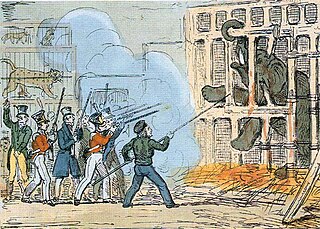 W
WChunee was an Indian elephant who was brought to Regency London in 1811.
 W
WEvans Music-and-Supper Rooms was an entertainment venue for music and singing in the early nineteenth century, located at 43 King Street, Covent Garden, London. The venue provided the type of entertainment which later evolved into music hall. What would later be known as the Evans Music and Supper Rooms was initially known as the Thomas Archer House. The house was built by Thomas Archer in 1712 for Admiral Edward Russell, the fourth Earl of Bedford's grandson. The House would later be sold to a man named Joy and turned into The Grand Hotel. Formerly the dining room of the Grand Hotel, a 'song and supper' room was established in the 1840s by W. H. Evans. It was also known as Evans Late Joy's, the venue previously being owned by a man named Joy. In 1842 the rooms were taken over by John Paddy Green, who had been one of Evans's entertainers. Green reconstructed the rooms and maintained their popular reputation. The room was 113 feet (34.4 m) long by 56 feet (17.1 m) wide.
 W
WThe Forty Elephants or Forty Thieves were an 18th to 20th century all-female London crime syndicate who specialised in shoplifting. This gang was notable for its longevity and skill in avoiding police detection.
 W
WThe Hammersmith Ghost murder case of 1804 set a legal precedent in the UK regarding self-defence: whether someone could be held liable for their actions even if they were the consequence of a mistaken belief.
 W
WThe Hogarth Club was an exhibition society of artists, based at 84 Charlotte Street, Fitzrovia, London, UK, which existed between 1858 and 1861. It was founded by former members of the Pre-Raphaelite Brotherhood after the original PRB had been dissolved. It was envisaged that the club would provide an alternative meeting space and exhibition venue to overcome prejudice against the Pre-Raphaelites at the Royal Academy. Unlike the PRB, the Hogarth Club was established on a professional basis, with two classes of members, artistic and non-artistic, and a distinction between London-based "resident" and provincial "non-resident" members.
 W
WLife and Labour of the People in London was a multi-volume book by Charles Booth which provided a survey of the lives and occupations of the working class of late 19th century London. The first edition was published in two volumes as Life and Labour of the People, Vol. I (1889) and Labour and Life of the People, Vol II (1891). The second edition was entitled Life and Labour of the People in London, and was produced in 9 volumes 1892-97. A third edition, running to a grand total of seventeen volumes appeared 1902-3.
 W
WLillie Bridge is a road bridge that links Old Brompton Road in the Royal Borough of Kensington and Chelsea with Lillie Road in the London Borough of Hammersmith & Fulham. It crosses two railways: the West London Line on the London Overground and the Wimbledon branch of the London Underground at West Brompton station.
 W
WLillie Bridge Depot is a historic English traction maintenance depot on the London Underground Piccadilly and District lines, situated in between West Brompton and West Kensington stations in the London Borough of Hammersmith and Fulham. It is accessed from the District line tracks between Earl's Court and West Kensington or between Earl's Court and Kensington (Olympia).
 W
WLondon Labour and the London Poor is a work of Victorian journalism by Henry Mayhew. In the 1840s, he observed, documented, and described the state of working people in London for a series of articles in a newspaper, the Morning Chronicle, that were later compiled into book form.
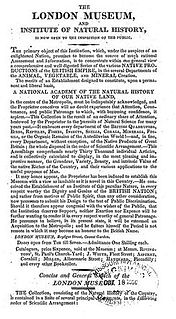 W
WThe London Museum and Institute of Natural History was a private natural history museum of the Georgian era. It opened to a paying public in 1807.
 W
WLondon Society was a Victorian era illustrated monthly periodical, subtitled "an illustrated magazine of light and amusing literature for the hours of relaxation". It was published between 1862 and 1898 by W. Clowes and Sons, London. The magazine published miscellaneous articles, short fiction, and serialized novels. The Stanford Companion to Victorian Fiction called it "an inferior imitator of Smith's Cornhill".
 W
W"London streets are paved with gold" is a saying that came from the 19th century story Dick Whittington and His Cat, loosely based on the 14th century Lord Mayor of London, Richard Whittington. The saying, which expresses the idea of a "land of opportunity", is partly ironic, since Dick Whittington found when he went to London that the streets were in fact grimy and poverty stricken. The second irony was that with persistence, belief, and luck, Whittington was able to become successful.
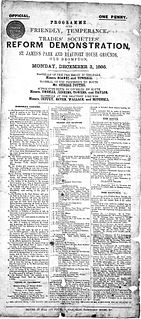 W
WThe London Working Men's Association was an organisation established in London in 1836. It was one of the foundations of Chartism. The founders were William Lovett, Francis Place and Henry Hetherington. They appealed to skilled workers rather than the mass of unskilled factory labourers. They were associated with Owenite socialism and the movement for general education.
 W
WMillbank Prison was a prison in Millbank, Westminster, London, originally constructed as the National Penitentiary, and which for part of its history served as a holding facility for convicted prisoners before they were transported to Australia. It was opened in 1816 and closed in 1890.
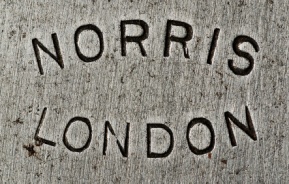 W
WThe firm of T. Norris & Son was one of the most prestigious makers of hand tools in England in the late nineteenth and early twentieth centuries and famed for the quality and gracefulness of its output, notably of its metal planes. Both wooden and metal planes made in Norris's workshop survive as do other edge tools. Some Norris planes, especially bespoke models, are highly prized by woodworkers and collectors.
 W
WThe Old White Horse Cellar also known as Hatchetts White Horse Cellar at No. 155 Piccadilly, was one of the best known coaching inns in England during the 18th and 19th centuries. The first mention of the White Horse Cellar is in 1720. It was originally located on the corner of Arlington Street, where the Ritz Hotel is now located. The first landlord, a man named Williams, named it in honor of the newly established House of Hanover, whose heraldic emblem featured a white horse. The White Horse rose to prominence under Abraham Hatchett who later moved it to the opposite side of the road on the corner of Albemarle Street, where it was known as "Hatchett’s Hotel and White Horse Cellar". The precise date of the move is not known, but was precipitated by the construction of the Bath Hotel, which was located on the corner of Piccadilly and Arlington as early as 1798. It was torn down in 1884 to make room for the Albemarle.
 W
WJoseph Parker was an English Congregational minister.
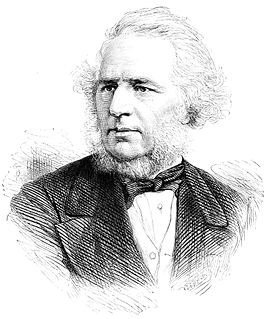 W
WSir Charles Reed FSA was a British politician who served as Member of Parliament for Hackney and for St Ives, Chairman of the London School Board, Director and Trustee of the original Abney Park Cemetery Joint Stock Company, Chairman of the Bunhill Fields Preservation Committee, associate of George Peabody, lay Congregationalist, and owner of a successful commercial type-founding business in London. He was elected a Fellow of the Society of Antiquaries, and was knighted by the Queen at Windsor Castle in 1874. As a pastime he collected autographed letters and keys.
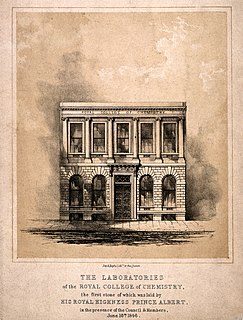 W
WThe Royal College of Chemistry (RCC) was a college originally based on Oxford Street in central London, England. It operated between 1845 and 1872.
 W
WCharles Haddon Spurgeon was an English Particular Baptist preacher. Spurgeon remains highly influential among Christians of various denominations, among whom he is known as the "Prince of Preachers". He was a strong figure in the Reformed Baptist tradition, defending the 1689 London Baptist Confession of Faith, and opposing the liberal and pragmatic theological tendencies in the Church of his day.
 W
WThe St John's Wood Clique was a group of Victorian artists who mostly lived in the St John's Wood area of London. Their ideas were broadly similar to an earlier group also called The Clique. The principal members of the group were Philip Hermogenes Calderon, George Dunlop Leslie, Henry Stacy Marks, George Adolphus Storey, David Wilkie Wynfield, John Evan Hodgson and William Frederick Yeames. According to Graham Reynolds the group was notable for its love of practical jokes.
 W
WTiny the Wonder was an English Toy Terrier famous in the City of London in the mid-19th century for being able to kill 200 rats in an hour in the city's rat-baiting pits. At the time, the world record for killing 100 rats was 5 minutes, 30 seconds, held by a bull and terrier named Billy.
 W
WToole's Theatre, was a 19th-century West End building in William IV Street, near Charing Cross, in the City of Westminster. A succession of auditoria had occupied the site since 1832, serving a variety of functions, including religious and leisure activities. The theatre at its largest, after reconstruction in 1881–82, had a capacity of between 650 and 700.
 W
WThe Vere Street Coterie were a group of men arrested at a molly house in Vere Street, London in 1810 for sodomy and attempted sodomy. Eight men were eventually convicted. Two of them were hanged and six were pilloried for this offence. Along with Oscar Wilde's imprisonment for a similar offence, this episode was one of the major events in gay history in England during the 19th century.
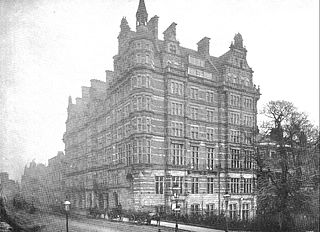 W
WThe Walsingham House or Walsingham House Hotel was located at 150-4 Piccadilly on the site of what is now The Ritz Hotel, London and was adjacent to the Bath Hotel. The Ritz's financial backers began negotiations in 1901 and purchased the Walsingham simultaneously with the Bath Hotel. Though the Walsingham was of fairly new construction, they determined it was too "inelegant" and demolished the building. One of the considerations that made the transaction appealing to the city was that they would be able to widen Piccadilly when the Walsingham and Bath Hotels were demolished.
 W
WOctavius Winslow, also known as "The Pilgrim's Companion", was a prominent 19th-century evangelical preacher in England and America. A Baptist minister for most of his life and contemporary of Charles Spurgeon and J. C. Ryle, he seceded to the Anglican church in his last decade.